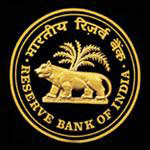The RBI left interest rates unchanged on Tuesday as it supports a battered rupee but said it will roll back recent liquidity tightening measures when stability returns to the currency market, enabling it to resume supporting growth.
As expected, the Reserve Bank of India left its policy repo rate at 7.25 per cent but took a dovish tone as it cut its growth forecast for Asia's third-largest economy to 5.5 per cent for the fiscal year, from 5.7 per cent previously.
It held the cash reserve ratio at 4 per cent.
The RBI said recent liquidity tightening steps "will be rolled back in a calibrated manner as stability is restored to the foreign exchange market, enabling monetary policy to revert to supporting growth with continuing vigil on inflation."
Fixed-income investors were pleased by the RBI's guidance, sending bond yields and swap rates lower. The benchmark 10-year bond yield dropped as much as 13 basis points to 8.03 percent. The rupee extended its falls to 59.7250 per dollar from 59.55 before the decision, and stocks were flat.
"The policy statement is slightly more dovish than what we had expected," said Sujan Hajra, chief economist at Anand Rathi in Mumbai.
"We expect that within two months, the cash tightening steps will be faded out, and monetary easing will resume. We are expecting another 50 basis points cut in the repo rate in 2013."
The last policy statement of RBI Governor Duvvuri Subbarao's five-year tenure, unless it is extended, continued to call on the government to take urgent steps to bring down the current account deficit, which hit a record 4.8 per cent of GDP in the last fiscal year.
The current account gap makes India especially vulnerable as global investors move away from emerging markets in anticipation of a winding down of loose U.S. monetary policy.
Turkey, Brazil and Indonesia have all raised rates to counter capital outflows.
Indian policymakers will be hoping the U.S. Federal Reserve doesn't spark a fresh surge in flows away from emerging markets when it holds its policy review this week.
"It should be emphasised that the time available now should be used with alacrity to institute structural measures to bring the CAD down to sustainable levels," Subbarao said.
However, New Delhi has struggled to implement steps to attract foreign corporate investment, and with elections due by May, Prime Minister Manmohan Singh's weak coalition government has limited room for pushing through further reforms.
The rupee fell to a record low 61.21 to the dollar on July 8, when it was down about 10 per cent since the start of 2013.
While India has succeeded in stabilising the rupee, which ended on Monday at 59.42, the surge in short-term interest rates has squeezed funding for corporate borrowers and prompted many economists to cut their growth forecasts.
"India is currently caught in a classic 'impossible trinity' trilemma whereby we are having to forfeit some monetary policy discretion to address external sector concerns," Subbarao said.
India grew at 5 per cent in the fiscal year that ended in March, its weakest in a decade, which had prompted the RBI to cut rates by 125 basis points since last year, although it paused in June amid worries of high consumer price inflation.
It said it aims to keep headline wholesale price index inflation at around 5 per cent by the end of the fiscal year in March and 3 per cent over the medium term. Annual wholesale inflation rose slightly to about 4.9 per cent in June.





